Turkish Contemporary Art 2.0
Kaya Genç interviews contemporary Turkish artist Halil Altındere and writer Süreyyya Evren about "User’s Manual 2.0: Contemporary Art in Turkey 1975–2015."
By Kaya GençJanuary 16, 2016
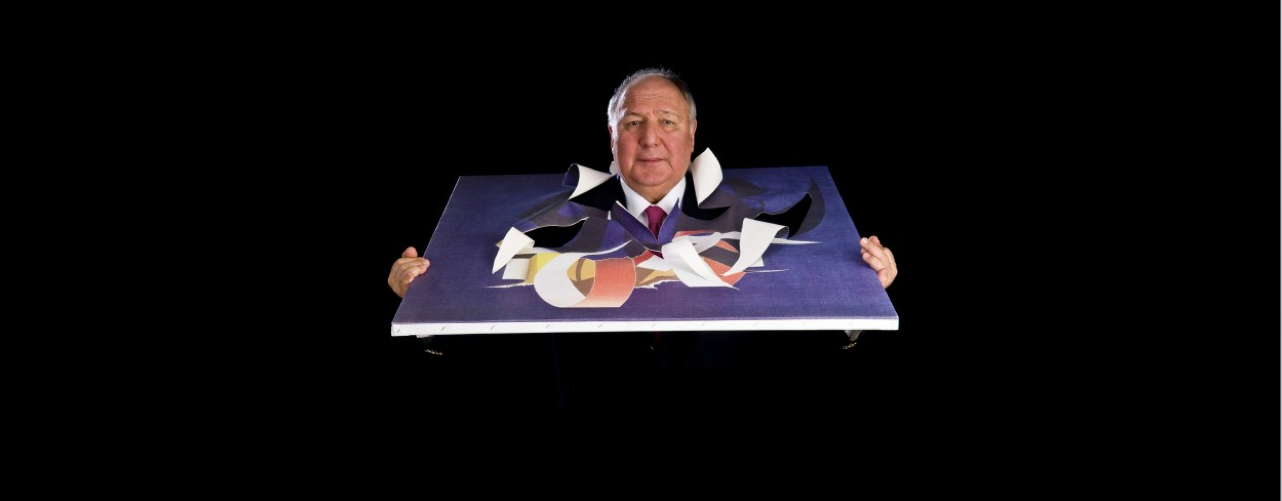
TURKEY IS A SURREALISTIC COUNTRY; art often fails to compete with its realities. Here politicians can be locked up for reciting a poem, or for addressing another political figure kindly as “Mr.”; salt and pepper shakers resembling political figures can get restaurant owners into trouble; having your name on a wedding’s seating chart can be considered as enough evidence for your membership to a shadowy organization for which you can be locked up for the rest of your life. We are used to reading surreal news all year long; here life imitates art 24/7. And yet, when foreign friends ask me about the country, I advise them to stay away from newspapers where the amazing ironies and paradoxes of Turkey are often overlooked by hacks who are too busy putting a partisan spin on news. I tell them, instead, to take a look at Turkey’s contemporary artists, to those rebels who have been undermining every single accepted idea this country has ever produced. While enjoying cups of strong Turkish coffee and trying to get a grip on the elaborate inner workings of this elusive country in Istanbul’s bohemian neighborhoods, my foreign friends often find themselves surrounded by small galleries where daring, contemporary art works are on display. “Go and see these shows, they have way more important things to say about Turkey’s class conflicts and ethnic and cultural problems than newspapers dare report,” I dream of telling them from above the clouds. Here it takes guts to speak out about Turkey’s past in a straight way: many here know about the cruelties of the past, but feel compelled to resort to silence, in fear of consequences.
Recently I got my hands on User’s Manual 2.0: Contemporary Art in Turkey 1975–2015, a 664-page book edited by the contemporary artist Halil Altındere and writer Süreyyya Evren. It is a finely executed work, designed by Şener Özmen in the shape of a 2001: A Space Odyssey–like monolith, featuring 1001 illustrations by 101 leading figures of Turkey’s contemporary art scene. Published this year (Revolver Publishing, Berlin), User’s Manual provides an excellent guide to anyone interested in comprehending the complexities of Turkey, be it last November’s general elections or the deep-rooted Ottoman and Turkic painting and miniature traditions making a comeback.
Altındere (born in 1971) is famous for his artist provocations; his latest work features Turkish lira coins bearing the image of the slain Turkish writer Hrant Dink as a national hero; his life-sized wax figure, Pala the Bard, canonized a street poet of Istanbul’s Istiklal Avenue known for his huge mustache. This alone is a political statement in a country where one needs a military background to get a sculpture. Altındere’s critique of Turkish militarism got him into trouble with authorities and he almost found himself behind bars; his friend Süreyyya Evren describes him as “a master of pastiche and parody,” and it is a dangerous thing to do parody in Turkey. Evren (born in 1972) is an art critic, a novelist, and a post-anarchist theorist; the third “y” of his first name, he says, comes from the lost “y” in the surname of the Turkish love poet, Cemal Süreya. Evren most recently edited the catalog of this summer’s Istanbul Biennial curated by Carolyn Christov-Bakargiev.
I recently sat down with Altındere and Evren to discuss why they devoted so much time and energy to producing a User’s Manual for Turkey’s contemporary art.
— Kaya Genç
¤
KAYA GENÇ: It sounds like a tongue-in-cheek idea to produce a "User’s Manual" for contemporary art in Turkey.
SÜREYYYA EVREN: Around the years 2005–2006, we felt the need for a reference book that brings together works of Turkey’s contemporary artists. We thought it could serve as a source of information about what had happened in the Turkish art world in the past and what was happening at the time.
Everyone talked about a certain "Istanbul boom" in the mid-2000s.
SE: Yes, back in 2005, contemporary art in Turkey was on the go. New institutions were emerging, new art museums and galleries were opening every month. There were new initiatives and endless news of young artists attaining international success. There was a feeling of glory in the air, provided by the arrival of popularity and profit; new galleries were opening up, there were new contemporary art shows. All this meant we needed a book that would make it easier to understand what on earth was going on in here. That is why we have called the first edition of our book a “User’s Manual.” It would consist of a collection of essays and images that help the reader understand who is who in Turkey’s contemporary art world and make more sense of its short history. We dreamed of a book that would offer its services and resources to the reader so that she could comprehend the situation here.
HALİL ALTINDERE: Since the day I entered the art world in the mid-1990s, there has been constant talk of an art boom in Turkey. First it was the Chinese art boom, then the Indian boom, followed by the Middle Eastern art boom. Next came the Balkan boom, which was succeeded by the Russian boom, and today there is a return to the Chinese art boom again. The booms are coming one after the other and we made a full circle. It is the magazines’ job to write about those art booms, art bubbles, and the like. Our aim with the User’s Manual was to produce something long lasting. We wanted to record our current era and take a look at its numerous milestones.
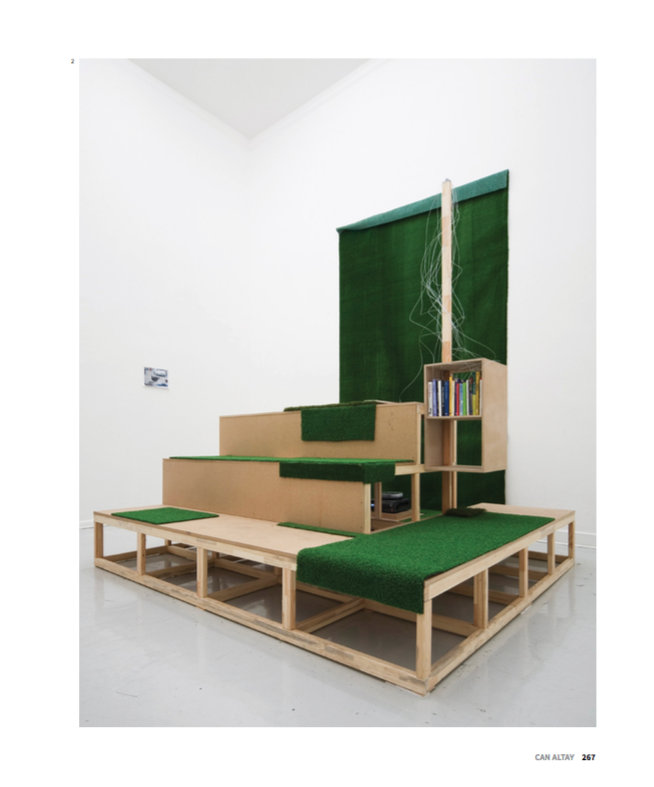
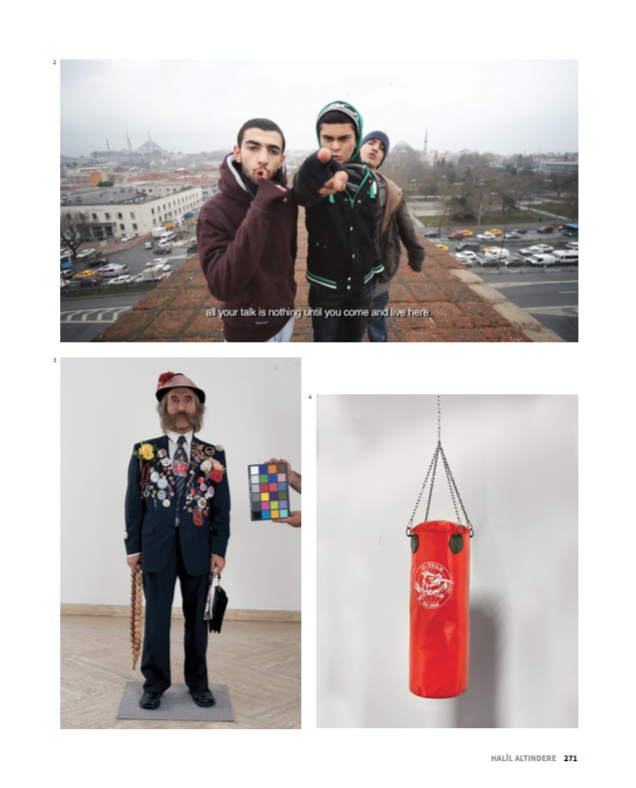
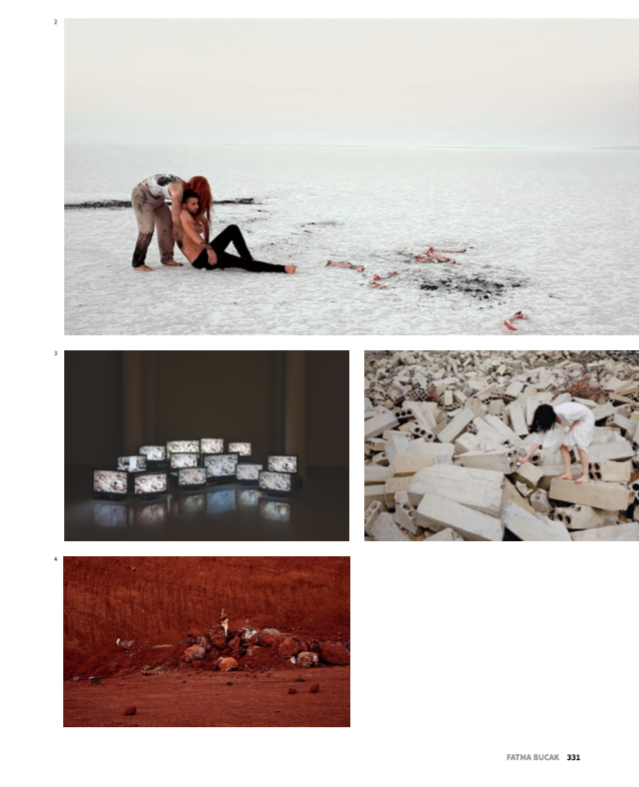
SE: The first edition of the User’s Manual was published at the end of 2007. In a few years time, it sold out. In 2015, the idea of a new edition started haunting us. That came about because of the increasing demand, especially from foreign readers and artists.
HA: We wanted to make an archeological excavation in Turkey’s contemporary art field. Our criteria was to find works that stood out in the careers of artists, but those works also needed to be representative of the artists. It was not only important to choose which artists to include here but also which works by which artists. We brought together three thousand works in a pool. We selected eight to 10 works from every artist, and the book ended up consisting of 1001 art works.
The first version of the User’s Manual appeared in 2007. People were surprised to see it cover the years 1986–2006. How on earth did you come up with the idea to add an extra two decades to that, so that the new Manual starts from 1975 and comes all the way to 2015?
SE: The preparations for the second edition began almost a decade after the first edition. We felt the new edition had to cover at least three decades. The main difference here is the starting point we take for the project, which is 1975. We wanted to include exhibitions, events, and artists from the late ’70s where so many things were happening in the Turkish art world. Those were necessary to see together so as to understand later developments. We wanted to give a picture of different generations, and show various qualities that create distinctive atmospheres in each era.
HA: Around one third of our selections consists of young artists. We took a big risk by including young artists who are still developing intellectually. But we had to put our trust in them.
SE: The second edition includes 101 artists, and this [is] a big number for a book. I want to emphasize that we do not present this as the story of Turkish contemporary art. Neither do we claim ours to be the list of Turkey’s leading artists. We are not trying to enforce a canon here, okay?
HA: We got things right with the first book. The artists we picked for the first Manual are still active today; 97 percent of the artists from our selection in the first Manual are still producing art.
What happened to the remaining three percent?
HA: [laughs] What we care about was a democratic coexistence of different generations of artists. Now, young artists tend to create more excitement in the international stage, so we were more inclined to include them. If someone criticizes the quality of the artists included here, we rush to their defense.
How was it like to do this collaboration as a writer and an artist? You belong to essentially different species.
SE: [laughs] We have been working together for around 20 years. Our collaboration began with the publication of Istanbul based art-ist magazine in the 1990s. We continued our cooperation with reference books like 101 Art Works, Forty Years of Turkish Contemporary Art (2011) and Turkish Contemporary Art for Children (2013). All these collections point [to] a certain understanding of art; you will see how they are all connected if you look at them together. There is a correlation between the exhibitions Halil curated during this period, and the essays I wrote for artistic and political journals. He is an artist, I am a writer of fiction, and this probably influenced our perception of the art scene.
Was the process of selecting these artists a bit like editing a magazine?
SE: It was more like editing a puzzle. Essays in this book are filling various voids. They are there to inform you about the thinkers, curators, institutions, relations, concepts, discussions, contexts, and discourses of Turkish contemporary art.
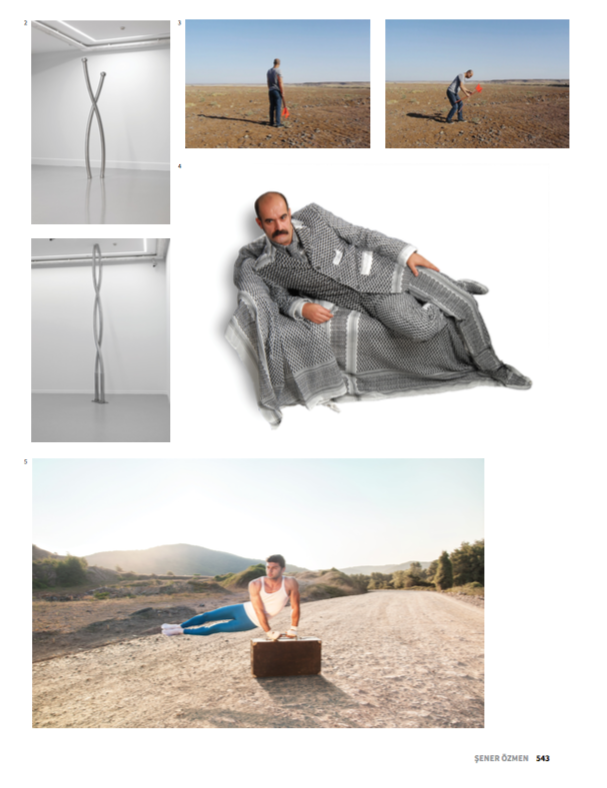
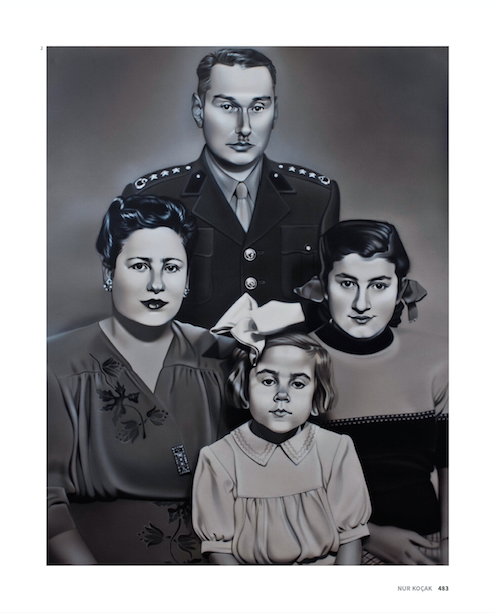
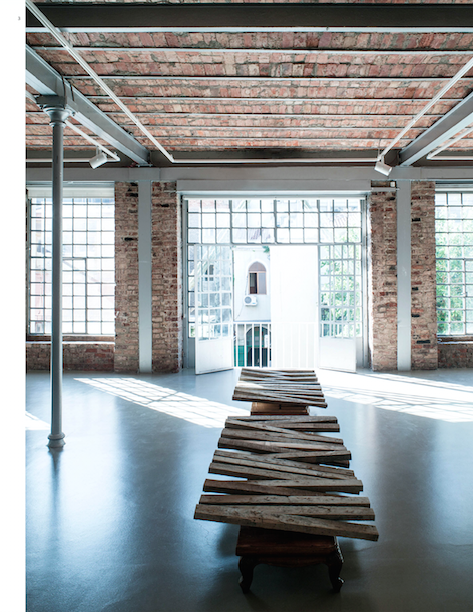
Let’s talk about some of the works, preferably more controversial and striking ones, featured in the Manual.
SE: Sure! I would mention Necla Rüzgar’s “Bloody Mary” (2007) which depicts two women, in head scarves, kissing each other on the lips. It looks very much like Banksy’s gay cops but this time, it features two Muslim women. In Şükran Moral’s “Hamam” (1997) a photo shows the artist, naked, in a Turkish bath; she is only wearing a towel and is surrounded with many relaxed and semi-naked men. The artist is very relaxed and confident here, and poses as if she is among friends. It challenges orientalist fantasies based around Turkish baths and women in them, and also problematizes local sexual fantasies, which are quite macho. In Burak Arıkan’s “Networks of Dispossession” (2013) we get a digital map of Turkey’s business networks through which people’s dispossession is made possible. It is a very political work that invites audiences to learn more about property-related issues in Turkey. Or take Antonio Cosentino’s “Tin City” (2009–2013) which features an imaginary tin city made up of tin cans found on the street, from rubbish bins. Those tin buildings refer to imaginary buildings taken from novels and the artist’s own imagination. It offers a totally new city Cosentino has built out of “nothing.” Finally, Burak Delier’s “Collector’s Wish” (2012) is a special project based on the role of artist today. It is an ironic work that shows how artists are not really free in their dealings within the contemporary art world. It is based on the idea that the artist is forced to do whatever the collector wishes her to do.
Did you have a more international audience in mind while curating the new Manual?
SE: While preparing the first edition, we had a more local audience in mind. Once it was out, we realized how mistaken we were. In fact, the actual readers of such a book is international in scope. So while preparing the second edition we knew it was time to go international. Now, it is the case that even if we intend to prepare a book on Turkish contemporary art for a local audience, the resultant book is embraced by an international audience and finds its true meaning in the global arena.
HA: Turkey’s contemporary art scene began to internationalize from the beginning of the 1990s. It works like this: they first make appearances in Turkey and then get recognition in Europe. Then comes venues like the São Paulo and Venice Biennials. In October, I visited Los Angeles where I was invited for a studio visit at the California Institute of Arts. I went to CalArts and left a copy of the Manual there. To my utter surprise, art students of CalArts were familiar not only with the artists we included in the Manual but also with their key works. It seemed to me like the Manual had worked, after all.
¤
LARB Contributor
Kaya Genç is the author of three books from Bloomsbury Publishing: The Lion and the Nightingale (2019), Under the Shadow (2016), and An Istanbul Anthology (2015). He has contributed to the world’s leading journals and newspapers, including two front page stories in The New York Times, cover stories in The New York Review of Books, Foreign Affairs, and The Times Literary Supplement, and essays and articles in The New Yorker, The Nation, The Paris Review, The Guardian, The Financial Times, The New Statesman, The New Republic, Time, Newsweek, and the London Review of Books. The Atlantic picked Kaya’s writings for the magazine’s “best works of journalism in 2014” list. A critic for Artforum and Art in America, and a contributing editor at Index on Censorship, Kaya gave lectures at venues including the Royal Anthropological Institute, and appeared live on flagship programs including the Leonard Lopate Show on WNYC and BBC’s Start the Week. He has been a speaker at Edinburgh, Jaipur, and Ways with Words book festivals, and holds a PhD in English literature. Kaya is the Istanbul correspondent of the Los Angeles Review of Books.
LARB Staff Recommendations
Auerbach in Istanbul
Erich Auerbach’s life in Istanbul, after escaping the Nazis, and his greatest work, "Mimesis"
The Friends of the Museum
The Museum of Innocence is 500 days old; the things in the shops around it are older.
Did you know LARB is a reader-supported nonprofit?
LARB publishes daily without a paywall as part of our mission to make rigorous, incisive, and engaging writing on every aspect of literature, culture, and the arts freely accessible to the public. Help us continue this work with your tax-deductible donation today!